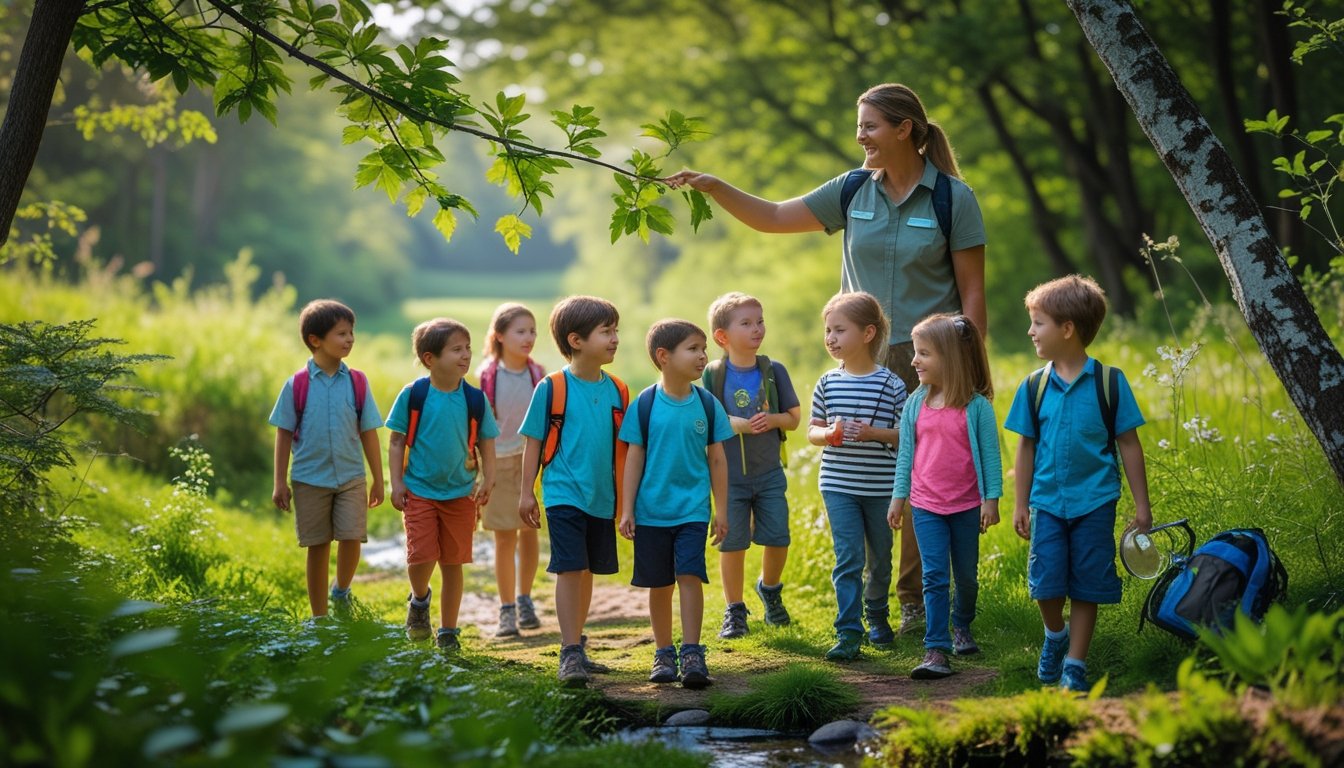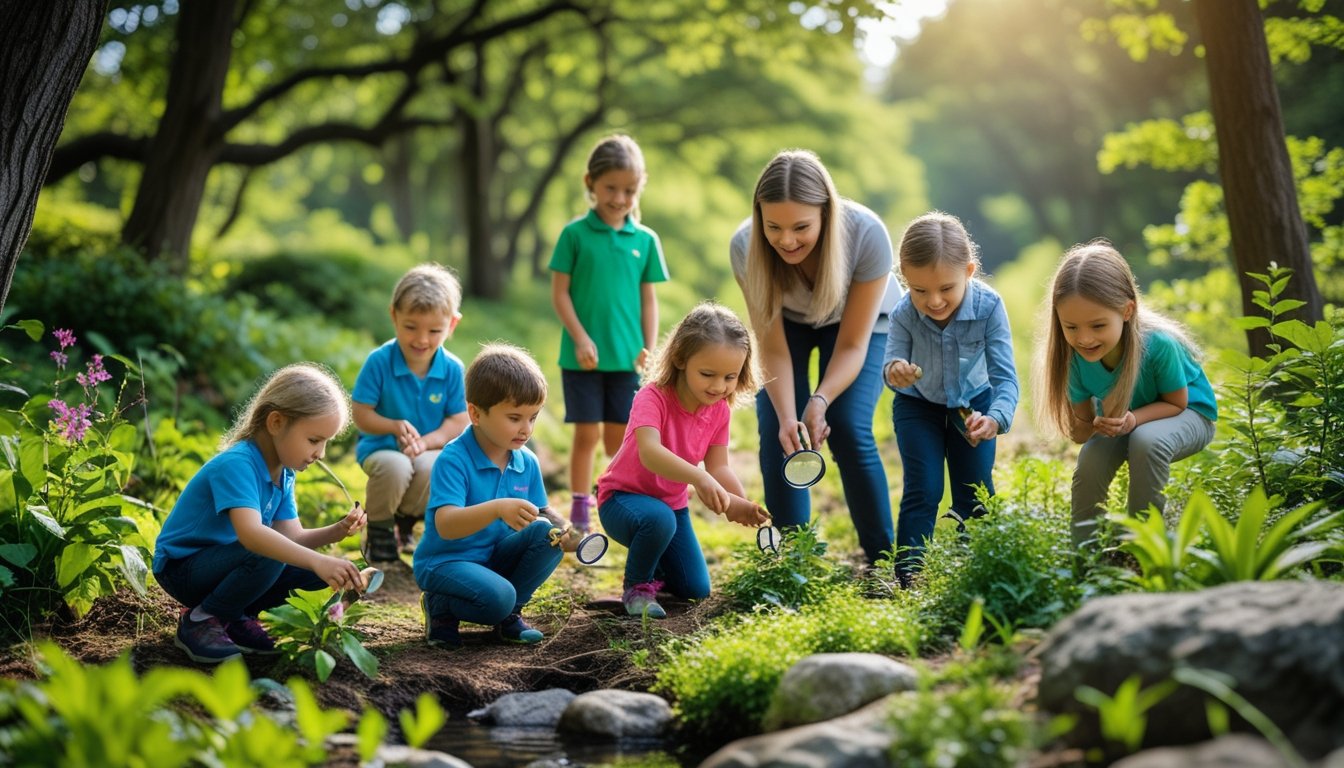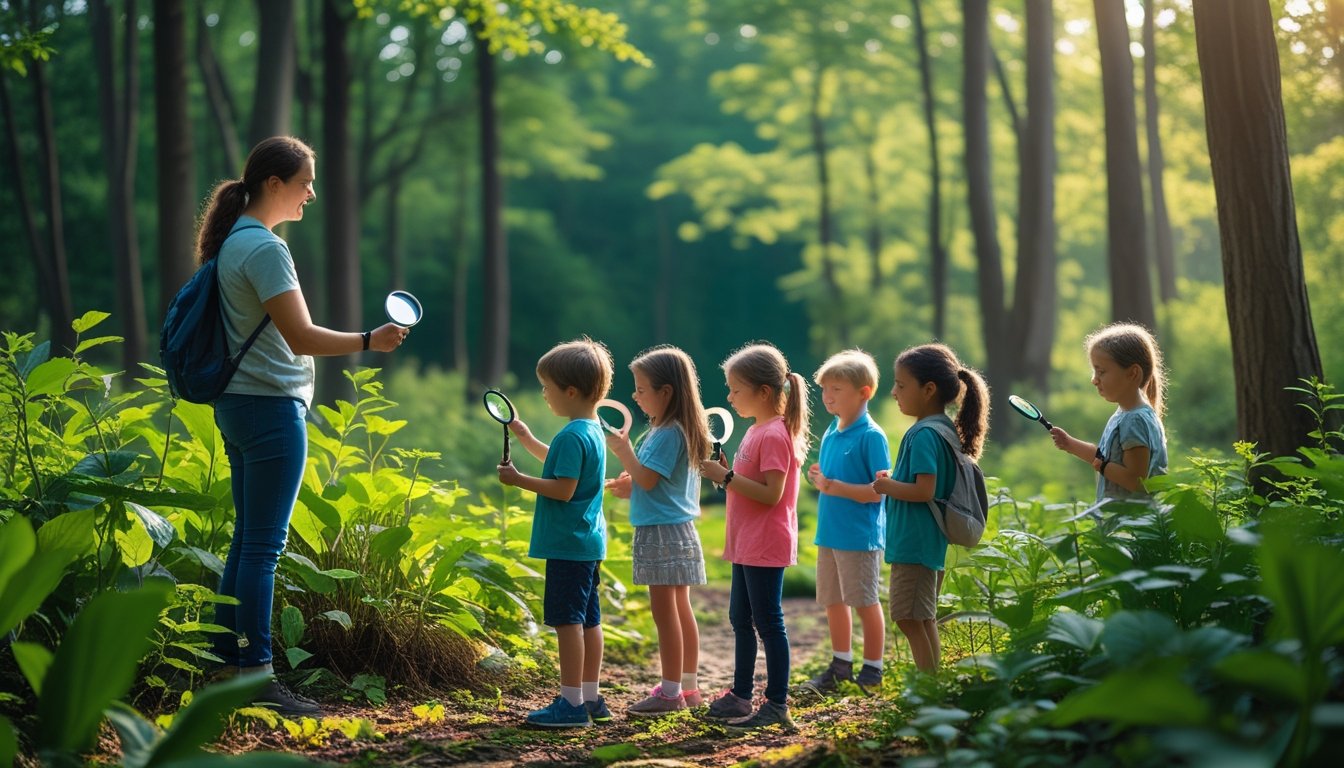Late updated: 02 Aug 2025 08:08
Written by:
Nurturing Children's Curiosity Through Nature Walks: Inspiring Young Minds Outdoors
Beneath the canopy of trees and amidst the symphony of birds, nature walks offer more than just a scenic escape; they are an incredible way to spark curiosity in children. As we amble through the woods or along a winding trail, young minds naturally begin to question, explore, and imagine the world around them. By engaging children in natural spaces, we encourage a lifelong enthusiasm for discovery and learning.

It's fascinating to see how a simple leaf or a distant bird call can stimulate the imaginations of young adventurers. These walks provide the perfect opportunity for hands-on learning, where children can absorb the wonders around them while developing their observational skills. From identifying different plants to listening for animals, each element of nature becomes a potential source of inquiry and wonder.
Incorporating structured activities like scavenger hunts or drawing opportunities can further enhance the experience. These not only make the walks more interactive but also deepen children's connection to nature. As they embark on these explorative journeys, we witness blossoming curiosity that is essential for their cognitive and emotional development.
Key Takeaways
- Nature walks inspire curiosity and lifelong learning.
- Simple natural elements encourage exploration and discovery.
- Activities enhance children's connection to the environment.
How Nature Walks Ignite Curiosity in Children
Nature walks serve as an engaging platform for children to develop vital skills. Through direct interactions with the environment, these walks nurture curiosity and promote cognitive growth. Key elements include observation, questioning, problem-solving, communication, and teamwork.
The Role of Outdoor Exploration in Child Development
Outdoor exploration provides a dynamic learning environment crucial for child development. Unlike structured classroom settings, nature walks expose children to ever-changing stimuli. This variability enhances their ability to adapt and think flexibly. Our exposure to diverse ecosystems not only broadens knowledge but also kindles a lifelong love for learning.
Engaging with nature instills an innate curiosity, sparking a desire to discover. The tactile experience of touching leaves or feeling water encourages sensory awareness. Nature serves as an unending source of lessons.
Encouraging Curiosity Through Observation and Questioning
Observation is a cornerstone of curiosity-driven learning. As we explore, children learn to pay attention to fine details, improving their ability to notice variations in the environment. Encouraging them to ask open-ended questions fosters a deeper understanding. Questions like "Why do leaves change colour?" stimulate critical thinking.
It’s not just about finding answers; the process of questioning leads to richer exploration. This habit nurtures an inquiring mindset. Our guidance in framing these questions aids in developing communication skills and confidence.
Building Problem-Solving and Critical Thinking Skills
Nature provides endless opportunities for hands-on learning, promoting problem-solving and critical thinking skills. Challenges such as navigating trails using natural landmarks teach us to plan and analyse. When faced with obstacles, children learn to devise creative solutions.
Through trial and error, critical thinking is honed. Our experiences in managing these challenges develop resilience and adaptability. This kind of experiential learning is crucial, as it allows children to apply logic and reasoning in real-world contexts.
Enhancing Communication and Teamwork
Nature walks are excellent settings for enhancing communication and teamwork skills. Working together to solve puzzles or complete tasks fosters collaboration. As we discuss findings, children learn to articulate thoughts and listen to others, which boosts effective communication.
Interaction with peers in these settings builds empathy and social competence. Our ability to work as a team enhances collective problem-solving efforts. This shared experience strengthens bonds and instils a collective love for learning, creating an enriching and enjoyable journey.
Practical Activities and Strategies for Nurturing Curiosity on Nature Walks

Let's explore some engaging techniques to foster children's curiosity through nature walks. We'll delve into activities that make learning an exciting journey, such as scavenger hunts, creating nature journals, and observing wildlife. Our aim is to cultivate observation skills, environmental awareness, and a deep appreciation for nature.
Nature Scavenger Hunts and Exploration Games
Nature scavenger hunts transform ordinary walks into thrilling adventures. We can create lists of items for children to find, such as leaves, rocks, or specific insects. This encourages nature exploration and helps develop pattern recognition and observation skills.
Incorporating games with specific themes enhances engagement. We can use simple checklists for younger children or riddles about animal behaviour for older ones. Such activities bolster gross motor skills and emotional regulation as children engage actively with their surroundings.
Creating and Using Nature Journals
A nature journal serves as a personal record of discoveries. We encourage kids to sketch the plant growth, document weather changes, or write observations about seasonal changes. Through journaling, they develop a deeper connection with their environment and refine their observation skills.
Moreover, this activity improves children's environmental awareness and responsibility. Using apps like iNaturalist allows them to share findings globally, promoting conservation efforts. Journals become a cherished collection of memories and insights gained during various nature adventures.
Promoting Wildlife Observation and Environmental Awareness
Wildlife observation offers insights into animal behaviour. We teach children to pay attention to bird calls or insect movements. This practice enhances nature-based learning and builds a sense of environmental stewardship.
Discussing the impact of human activities on habitats aids understanding of conservation and responsibility. By observing changes over time, such as nesting patterns or animal interactions, youngsters learn to appreciate biodiversity and the importance of protecting natural ecosystems.
Incorporating Pattern Recognition and Weather Observations
Engaging children in observing weather patterns and cloud formations provides a practical approach to understanding climate. By identifying weather changes and seasonal variations, they learn to connect these phenomena to plant and animal behaviours.
This not only fosters curiosity but also instils a respect for natural cycles. We encourage children to predict weather conditions or track cloud movements, integrating science into outdoor learning. Understanding these patterns nurtures critical thinking and aids in developing a lifelong interest in environmental science.
Frequently Asked Questions

Exploring nature through walks can significantly enhance children's curiosity and learning, offering benefits like improved physical and cognitive development. By tailoring these experiences and employing engaging strategies, we can foster a lifelong connection with the natural world.
How can nature walks stimulate a child's curiosity and learning?
Nature walks offer rich opportunities for sensory exploration. As children observe plants, animals, and landscapes, they are prompted to ask questions and investigate further. These experiences cultivate critical thinking and observation skills, encouraging them to learn through interaction with their environment.
What are the key benefits of exposing toddlers to nature?
Introducing toddlers to nature supports their physical development, as outdoor activities promote motor skills. Exposure to various natural elements also heightens sensory awareness. Emotionally, being in nature can be calming for young children, helping to foster a sense of curiosity and wonder about the world around them.
What role does nature play in the overall development of children?
Nature plays a multifaceted role in children’s development. It enhances physical health through active play and supports cognitive growth by encouraging problem-solving and creative thinking. Additionally, nature fosters emotional well-being and resilience, providing a balanced environment for holistic growth.
How can parents effectively incorporate nature walks into their children's routine?
Consistency is key. By scheduling regular nature walks, parents can help make outdoor exploration a routine part of their children’s lives. Choosing diverse locations, from local parks to nature reserves, can also keep experiences fresh and engaging. Parents play a crucial role by leading by example and showing enthusiasm for the natural world.
What strategies can be used to engage children with nature during walks?
Interactive activities, such as scavenger hunts or nature journals, can heighten engagement. Encouraging storytelling related to observations can help children connect with nature more deeply. Asking open-ended questions about their surroundings nurtures curiosity and keeps them involved throughout the journey.
How can nature walk experiences be tailored to different age groups?
For younger children, shorter walks with simple activities are more suitable. Older children might enjoy more challenging hikes accompanied by detailed exploration tasks. Tailoring content and activities to the age group ensures the experience is both accessible and captivating for all participants.
